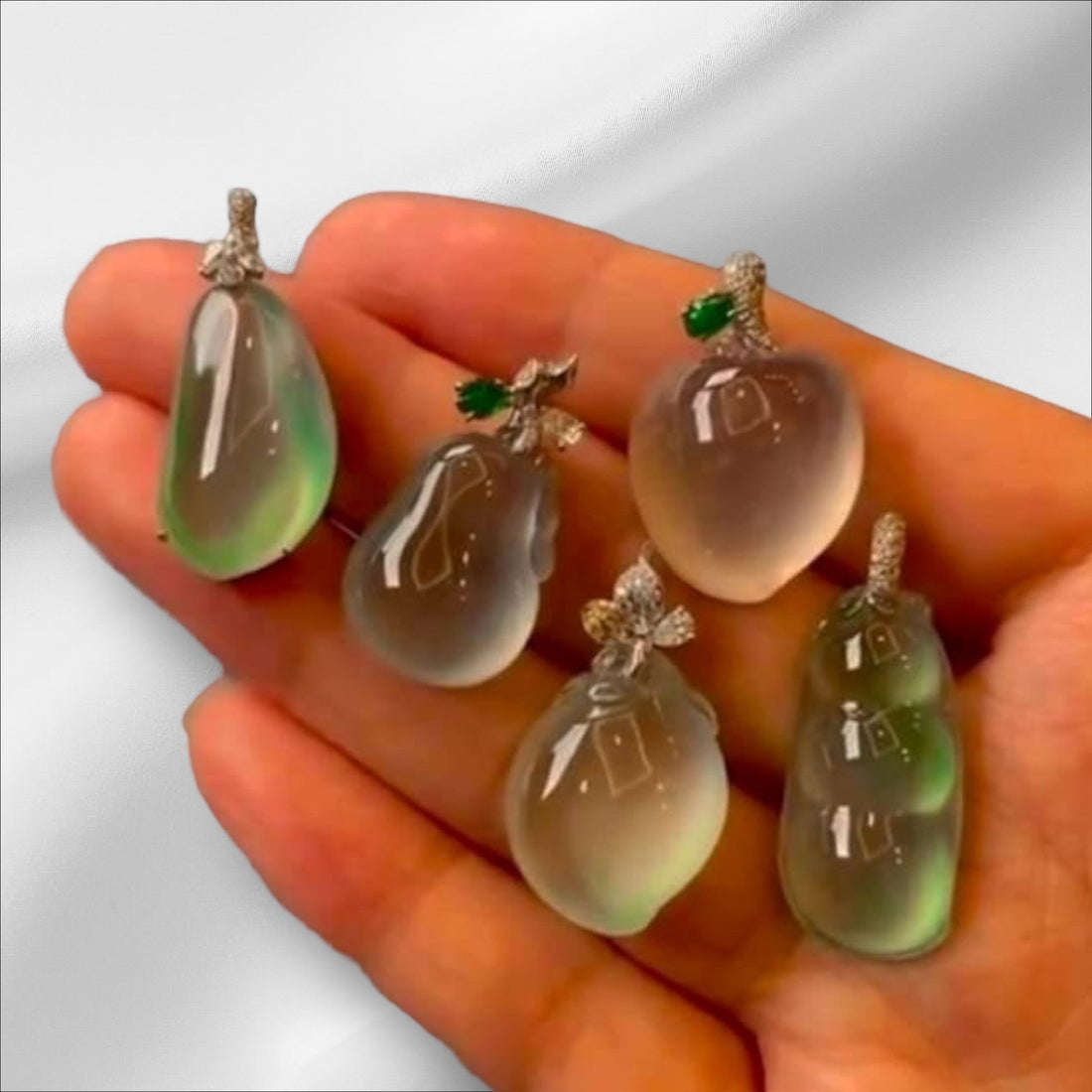
Jadeite’s "Zhong Shui" Classification System
Share
🌿 Jadeite’s "Zhong Shui" Classification System
Understanding Transparency, Texture, and Water Content in Jadeite
In traditional jadeite evaluation, the Chinese concept of “Zhong Shui” (種水) plays a key role in determining quality. This term combines two major elements:
- “Zhong” (種): The texture and crystal structure of the jadeite.
- “Shui” (水): The water content, luster, and transparency of the stone.
Together, they influence a jadeite piece’s brightness, clarity, and value.
🔍 I. Zhong (種): Texture & Structural Fineness
"Zhong" refers to the internal grain structure, density, and smoothness of jadeite. It directly affects how the stone reflects light and feels to the touch. Jadeite is classified into several categories based on texture:
💎 Glass-Type (玻璃種)
- Crystal-clear and almost as transparent as glass
- Exceptionally fine texture, no visible inclusions
- Rarest and most valuable category
❄️ Ice-Type (冰種)
- Highly translucent but slightly less than Glass-Type
- Clean, crisp structure with a cool, icy luster
- Very desirable in the market
🍚 Glutinous-Type (糯種)
- Semi-translucent, soft appearance
- Texture is smooth but somewhat cloudy, like rice porridge
- Commonly seen in mid-tier jadeite jewelry
🌱 Bean-Type (豆種)
- Coarser grains with visible crystal formations
- Typically opaque or only slightly translucent
- Uneven color distribution and lower market value
🎨 Other Types (e.g., 花青種 & 油青種)
- Flower-Green (花青種): Patchy green on a grayish or dark base
- Oil-Green (油青種): Dark, greasy tone with low transparency
- Both are considered commercial-grade jadeite
💧 II. Shui (水): Water-Like Appearance & Transparency
"Shui" measures the transparency, light penetration, and visual fluidity of jadeite—often referred to as its "water head."
✨ High-Ice Type (高冰種)
- Near-glass level transparency
- Clear, glowing, and very bright under light
- Just below Glass-Type in rarity and value
❄️ Ice-Type (冰種)
- Translucent to semi-translucent
- Smooth surface with strong luster
- Offers an appealing watery effect
🍶 Semi-Glutinous Type (糯化種)
- Softer luster with moderate translucency
- Transitional grade between Ice-Type and Glutinous-Type
🍚 Glutinous-Type (糯種)
- Slightly translucent with a cloudy interior
- Moderate “water head” and everyday wear-friendly
🫘 Bean-Type & Below (豆種及以下)
- Mostly opaque or minimally translucent
- Short “water head” and coarser visual appeal
🏆 Conclusion: Balance of Zhong + Shui = Jadeite Excellence
The best jadeite combines:
- Fine-grained texture (high Zhong)
- Excellent translucency and luster (high Shui)
Such as Glass-Type Jadeite, which is prized for both qualities and commands premium prices. However, jadeite with lower Zhong and Shui, like Glutinous or Bean-Type, is often used in beautiful and affordable daily wear jewelry.
📌 Quick Reference Table
|
Category |
Texture ("Zhong") |
Transparency ("Shui") |
Typical Use |
|
Glass-Type |
Ultra-fine, no inclusions |
Nearly transparent |
Collector-grade, high-end pieces |
|
Ice-Type |
Fine, crisp texture |
Very translucent |
Premium wearables |
|
Glutinous |
Smooth but cloudy |
Semi-translucent |
Mid-range jewelry |
|
Bean-Type |
Coarse with crystal grains |
Opaque or slightly translucent |
Entry-level or commercial use |
|
Other Types |
Mixed or uneven texture |
Low transparency |
Commercial-grade |
🛍️ Tip for Buyers
When shopping for jadeite, ask about both "Zhong" and "Shui" to better understand the piece’s value. Always request a certificate from a reputable gemological lab (e.g., GIA, Mason-Kay) to confirm authenticity.
